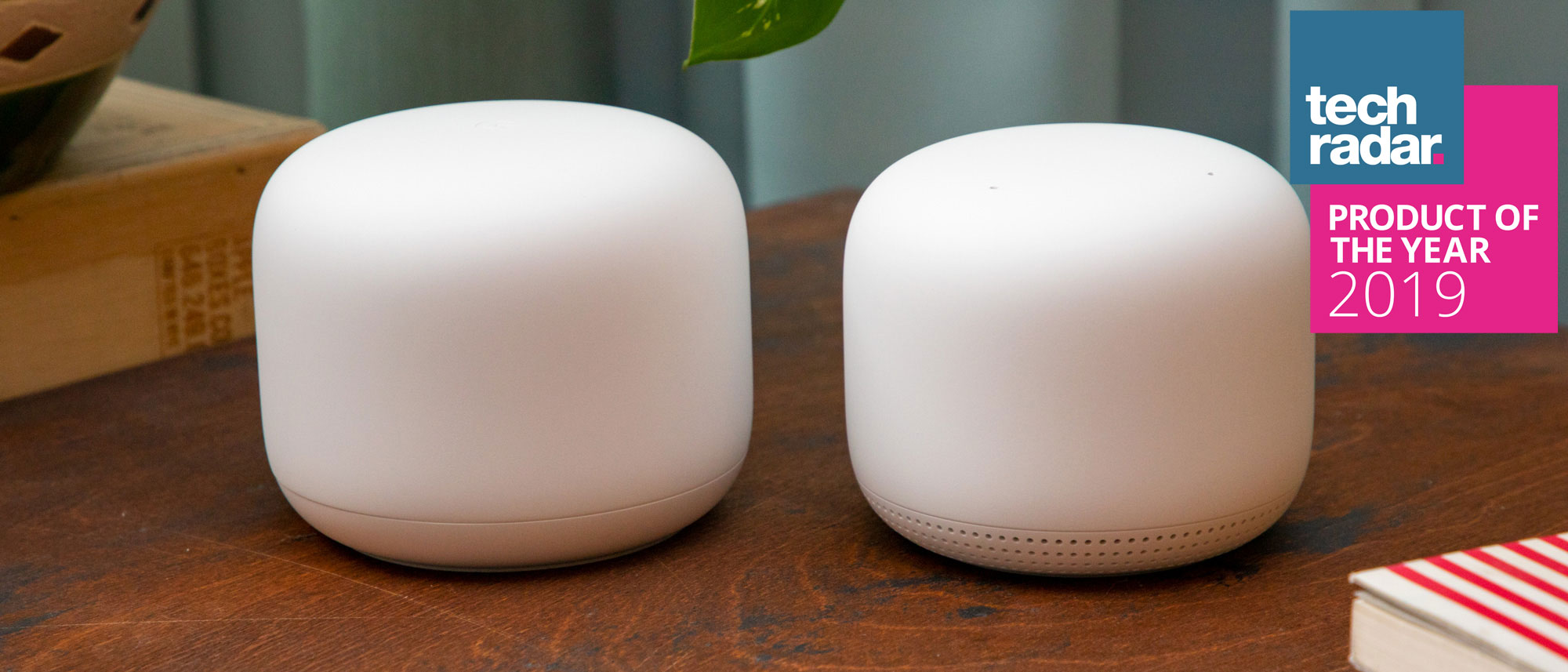TechRadar Verdict
We love the Google Nest Wifi for bringing together Google Wifi and Google Home into a single product offering at long last in an even more attractive design. While it’s not worth replacing your Google Wifi or other mesh system with this, we’d heartily recommend this solution over most others short of Google’s original mesh system.
Pros
- +
Google Wifi and Home together at last
- +
Excellent design
- +
Smart speaker(s) included
- +
Even simpler controls
Cons
- -
No major performance gains
- -
Not worth replacing existing mesh
- -
Some deeper control gets lost
Why you can trust TechRadar
Two-minute review
The Google Nest Wifi is not only a worthy successor to the incredibly successful Google Wifi but it builds on it to offer something that fits into a modern smart home. It bridges the gap between best mesh Wi-Fi routers and smart home speakers and it does so very well.
In essence, it keeps a lot of what made Google Wifi special. It doesn’t reinvent the wheel or change the performance too much. But, it does finally integrate Google Home into the experience for a 2-in-1 device that can sit at the center of your smart home.
That said, what makes the Google Nest Wifi special is its straightforward and easy use, not to mention aesthetic, along with a focus on the kind of features most users will care about. It won’t have the kind of performance, throughput or fine tuning that a lot of the best wireless routers and mesh systems from companies like Netgear and Linksys offer.
Luckily, the feature set is pretty expansive here including traffic prioritization, easy and stress-free setup, included parental controls and a look that won’t encourage you to hide each unit behind a couch or vase. Of course, if you already have your quota of smart speakers and own a solid mesh system such as Google Wifi, making the jump to the Google Nest Wifi makes little sense. If you don’t however, we strongly recommend investing in the Nest Wifi.
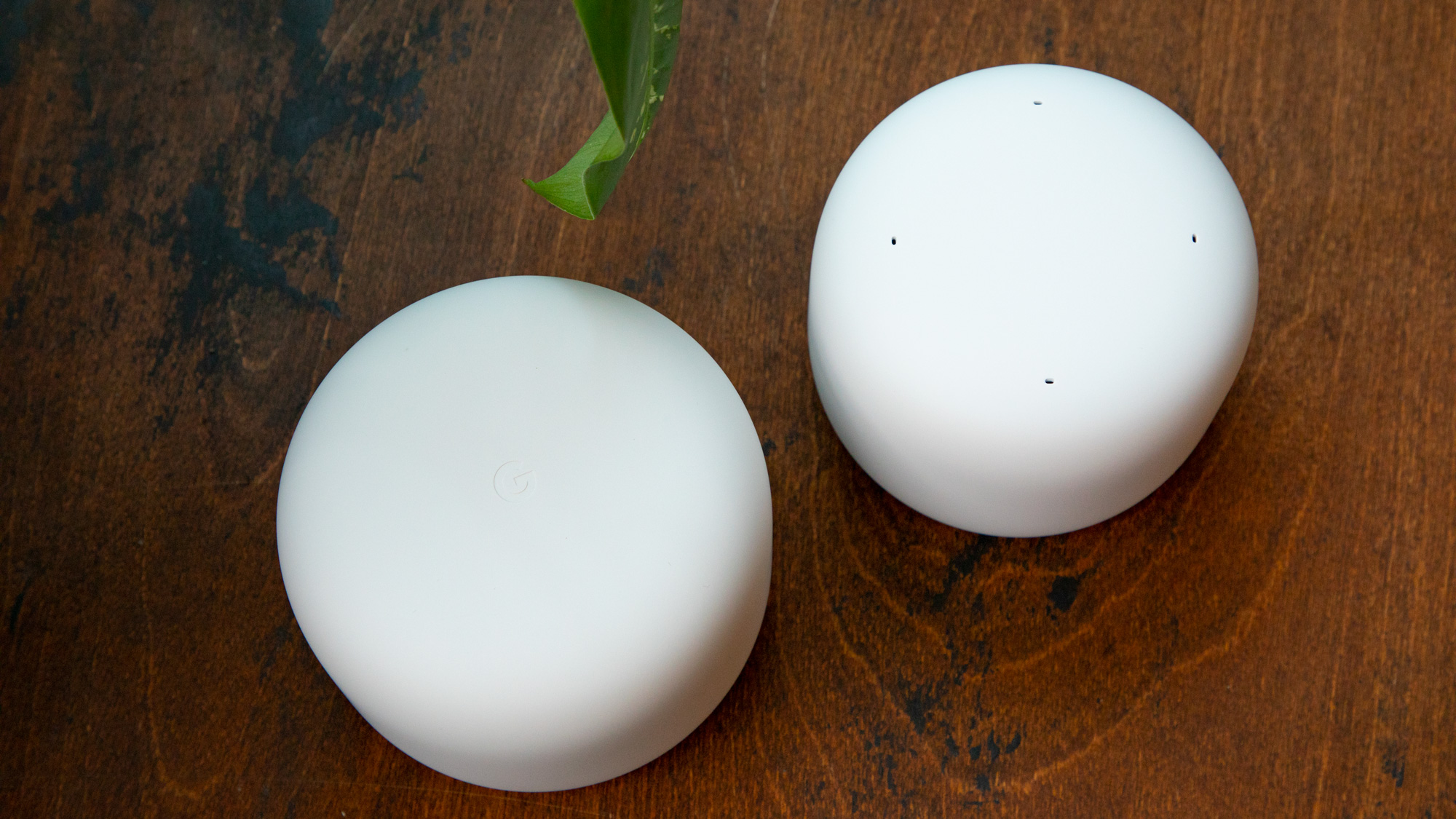
Wireless Connectivity: IEEE 802.11s/a/b/g/n/ac, AC2200 2x2 Wi-Fi (expandable mesh; dual-band 2.4GHz and 5GHz, beamforming); Bluetooth LE
Processor: 1.4 GHz ARM CPU (quad-core, 64-bit)
Memory: 1GB RAM (Router); 768MB RAM (Point)
Storage: 4GB flash (Router); 512MB flash (Point)
Beamforming: Implicit and Explicit for 2.4GHz & 5GHz bands
Ports: 2 x Gigabit Ethernet ports (Router)
Dimensions: 110mm diameter, 90.4mm height (Router); 102.2mm diameter, 87.2mm height (Point)
Weight: 380g (Router); 350g (Point)
Price and availability
Google Nest Wifi is available now in the US, UK and Australia starting at $149/£129/AU$229 for a single router unit. This wireless router simply connects to your modem or gateway and delivers up to 2,200 square feet (204 sq meters) of Wi-Fi coverage to up to 100 connected devices.
If you want that router paired with one of Google’s “Point” range extender products, that will cost you $269/£239/AU$399. This will increase your total Wi-Fi coverage by another 1,600 square feet (149 sq meters), and the Point doubles as a Google Home speaker complete with mutable microphones and 360-degree speakers.
Finally, Google is offering a three-pack in the US and Australia $349/AU$549 (not in the UK), which will cover up to 5,400 square feet (502 sq meters) and offer all of the same Google Assistant features available only via the Point devices.
Unfortunately, it appears that Google is only offering its beige “Sand” and light blue “Mist” colors in the US, as these options do not appear on the UK or Australian Google stores online.
How does this all stack up against Google’s new rival in home networking, Amazon? Well, Amazon’s entry-level Eero mesh solution is a bit cheaper at just $99 (£99, about AU$140), but its router alone only covers up to 1,500 square feet (139 sq meters) compared to the Nest Wifi router covering up to 2,200 square feet (204 sq meters).
However, Amazon offers up a three-pack of the Eero products for $249 (£249, about AU$361) and will cover up to 5,000 square feet (465 sq meters). Likewise, Google’s Nest Wifi three-pack can cover a wider area – as much as 5,400 square feet (502 sq meters).
Google Nest Wifi appears to offer both more flexibility and wider coverage than Amazon’s Eero devices, furthered by the fact that you can buy Nest Wifi Points on their own and add those to your existing Google Wifi network. Also, while Amazon’s Eero mesh network supports voice controls via any existing Alexa speaker, the Nest Wifi Point devices are Google Home speakers complete with microphones and a speaker on the bottom.
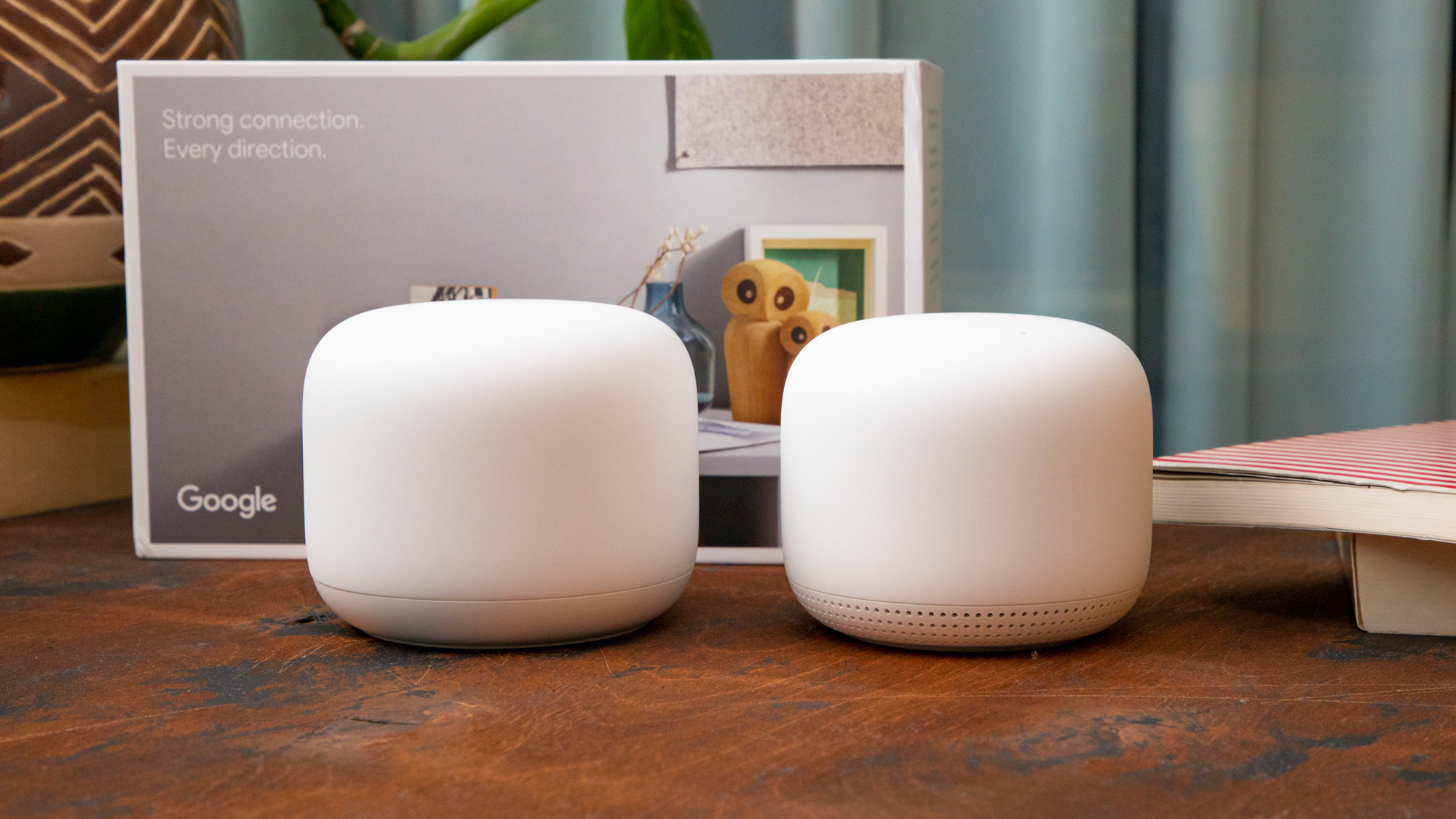

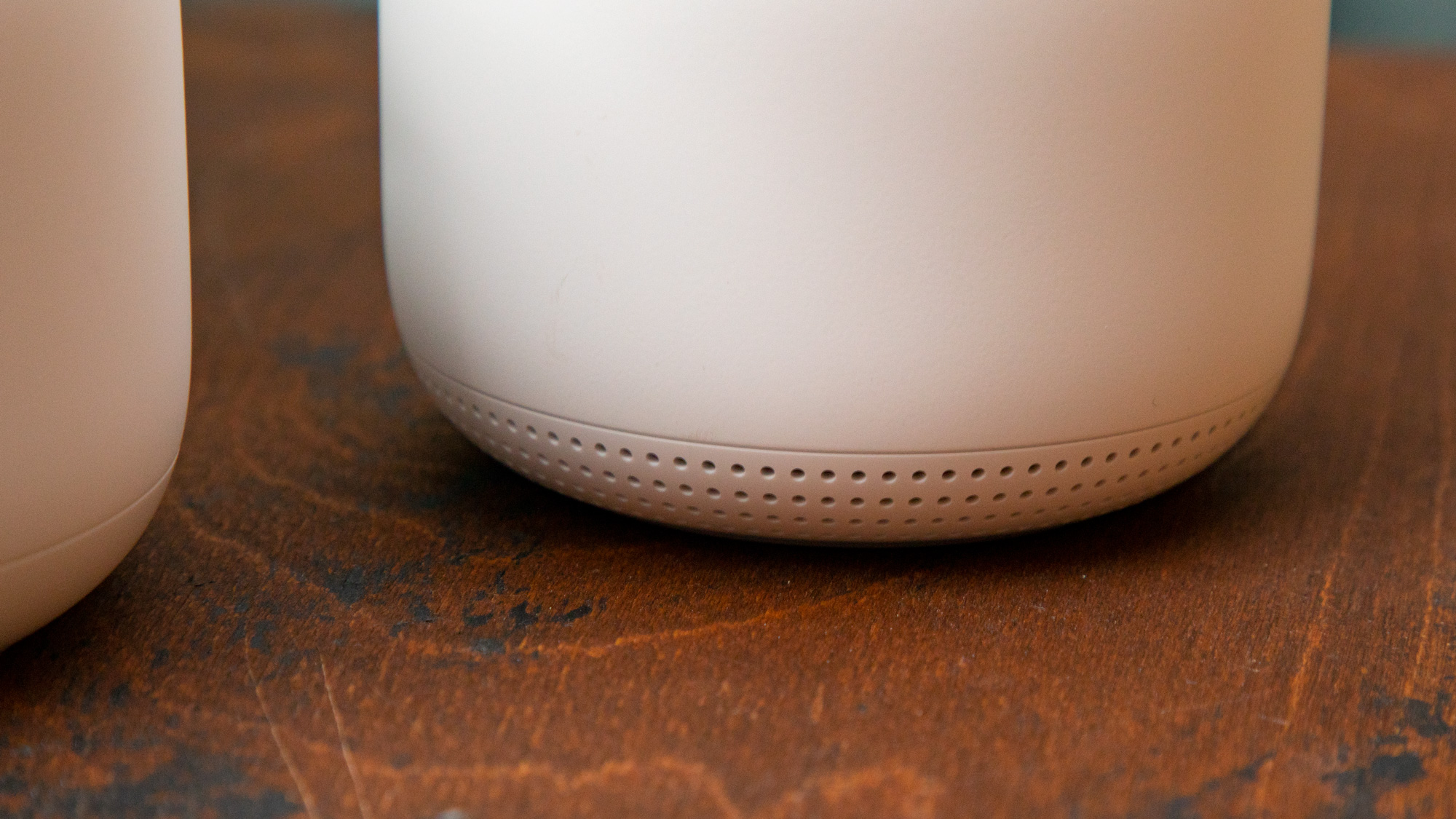


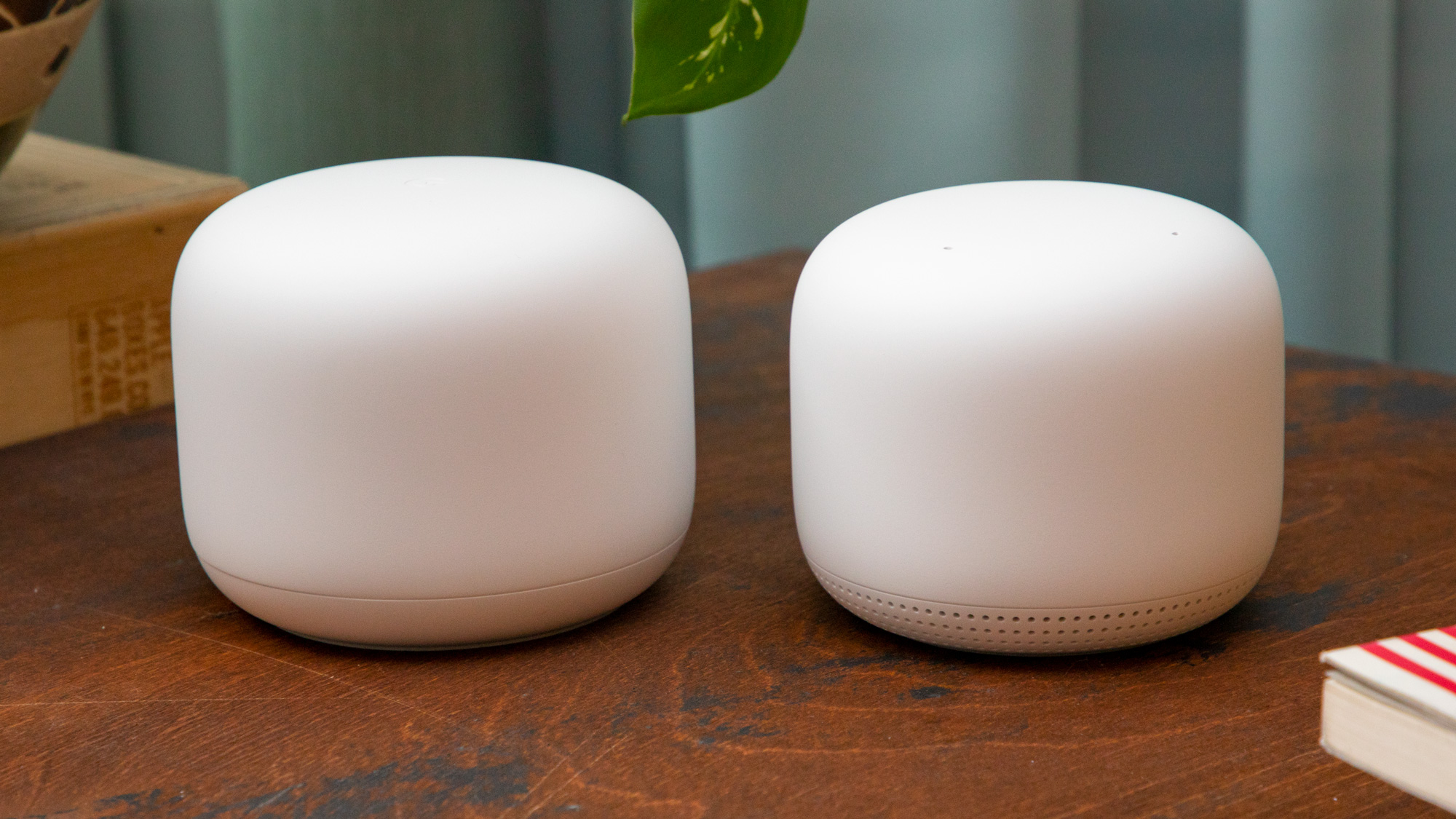
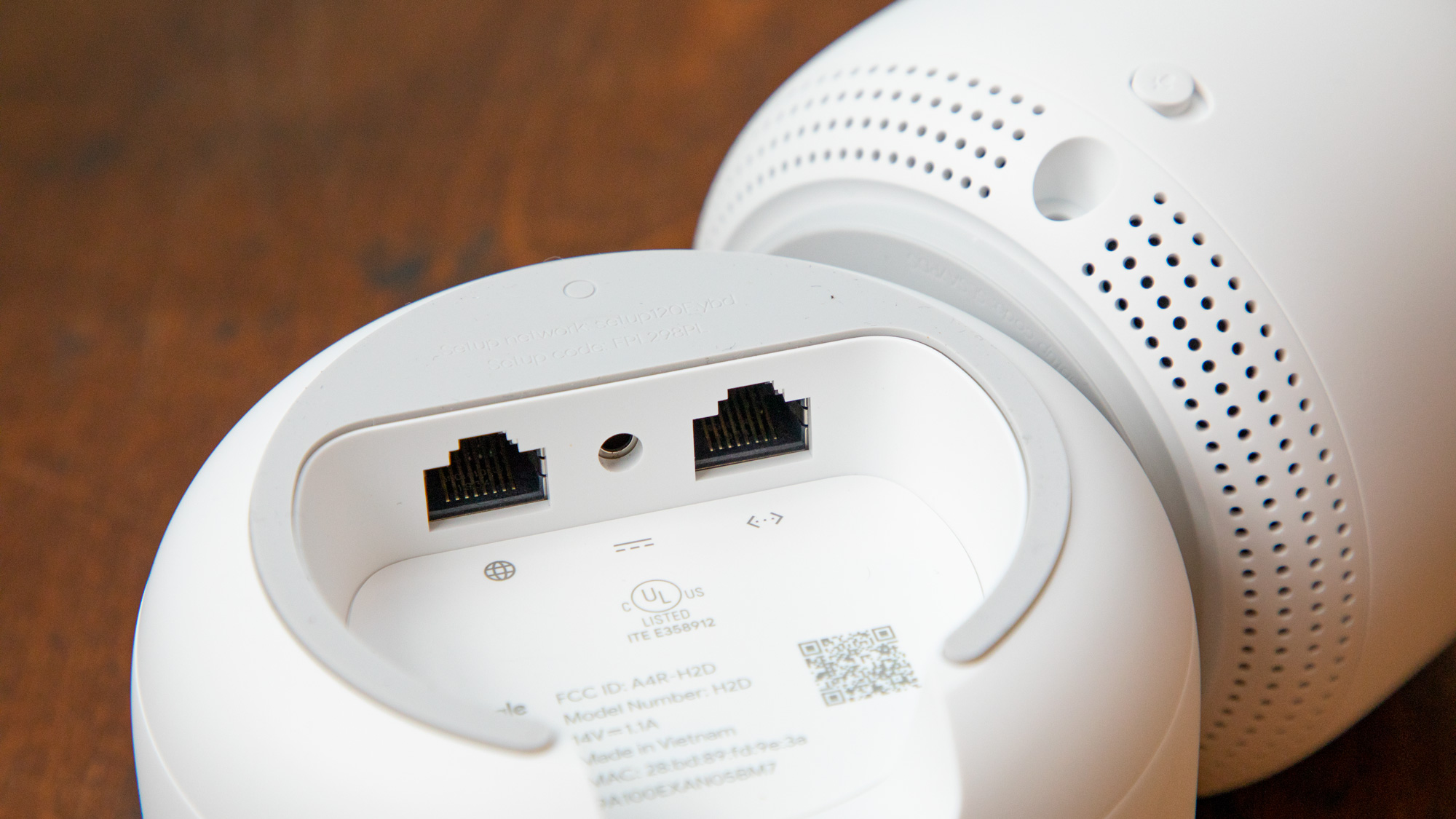
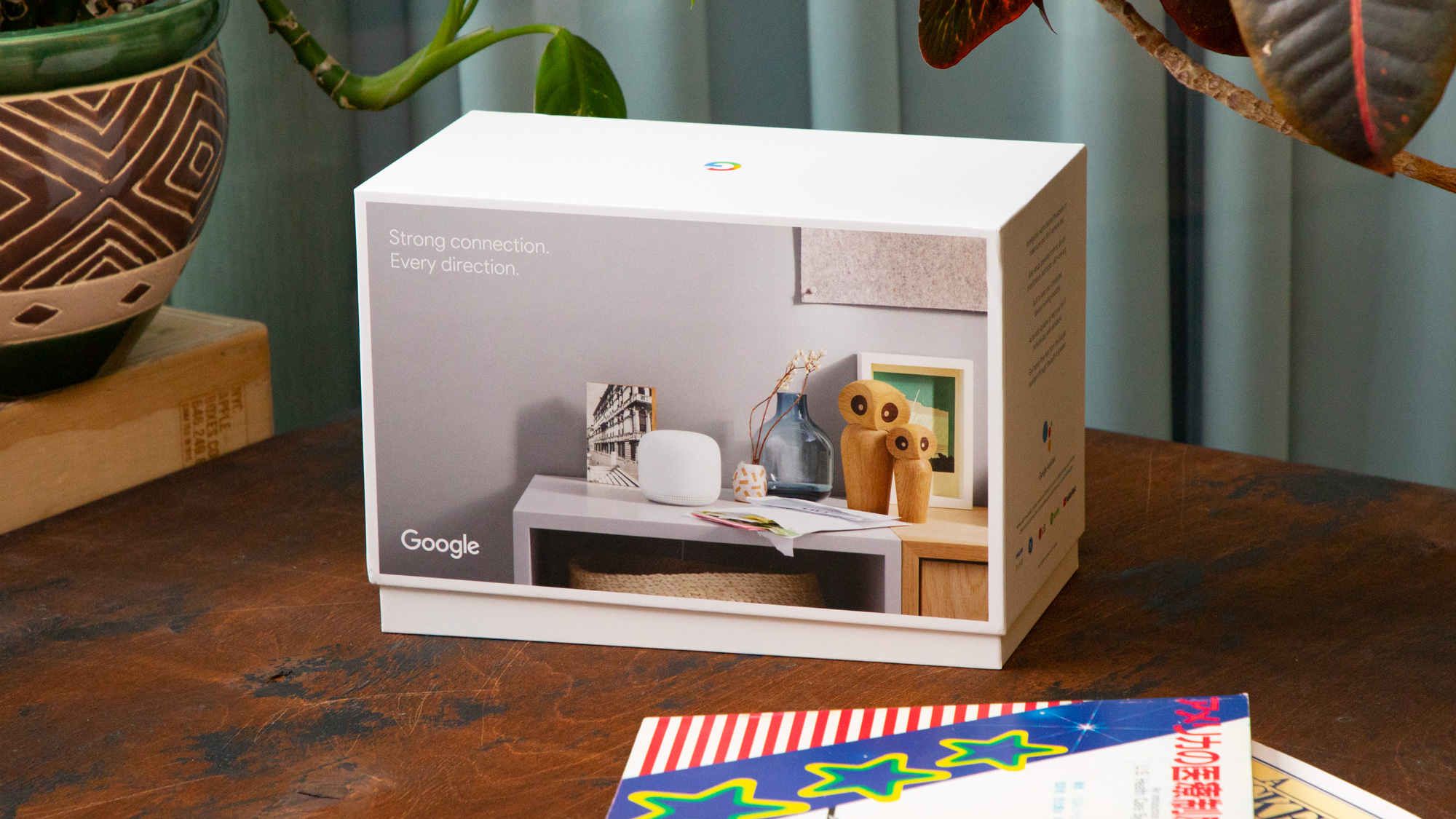
Design, setup and interface
The Google Nest Wifi design is a stark departure from the Google Wifi that preceded it. Gone are the glossy, white plastic cylinders in favor of some even more innocuous matte plastic domes that round off in comfortable corners at either end.
As for the Router device, it’s even lighter in terms of design features than the Points that double as Google Home speakers. All you’ll find here is a single, white LED that shines through the plastic shell to indicate a connection. On the bottom, you’ll find a tough rubber base hiding two Ethernet ports (one WAN and one LAN) as well as a standard AC charging port.
Of course, the Point device is a bit more stylish while looking nearly identical. Its major differences are the four far-field microphones on top and the 360-degree speaker with 40mm driver inside, bedecked by a single, round LED on the undercarriage that responds when asked questions via your voice. These units have no Ethernet ports included, making them considerably less useful than the previous-generation products but perhaps more focused.
When it comes to setting the network up and the interface therein, Nest Wifi is no longer set up using the Google Wifi app but rather the Google Home app. This is because part of the system is technically a Google Home speaker, making it easier to manage both within the same app. (Google Wifi will still exist for those who stick with the original model or opt to just add a Nest Wifi point to their original model.)
Of course, you’ll need a smartphone with the Google Home app to set up the Nest Wifi, which sees Google making a big assumption about who will be able to use this router. However, we have to imagine that the vast majority of Americans and Britons ready for a new router will have this access.
The setup process is a little wooly at times, which isn’t ideal, but retrying the connection a few times throughout will get you through the whole thing. Adding a Wifi Point after the main Router is done in exactly the same way, and can be just as … start-and-stop. Ultimately, Nest Wifi does do about 90% of the setup and updating itself, which is very welcome.
As for the interface, Google has brought the major features over from the Wifi app to the Home app – like setting a priority device, creating a guest network and setting family controls – but it does lose a bit of the fine control along the way. Particularly, you can no longer see exactly which Wifi device each connected device is actually tethered to and change that accordingly.
Instead, you’re left to assume and trust that Nest Wifi will automatically connect devices to the best possible Wi-Fi provider on-the-fly, which wasn’t always the case with the previous model. Google’s new, behind-the-scenes cloud features using machine learning chips within its Nest devices, which will automatically prioritize types of traffic based on bandwidth needs as well as physical position among other factors, should make up for this as the system learns your usage habits.
All told, having trudged through the days of typing “192.168.1.1” into our web browsers, we welcome the simplicity of the controls for Google Nest Wifi – even if it means giving up much of that fine tuning. Simply put, we don’t have the time for that nonsense any longer, but for those that care: know that this is not the system to go with if you want that level of control.

Performance
We’ve found the Google Nest Wifi to perform just as well as the original Google Wifi in our normal use, chewing through downloads and streaming video over our 100Mbps service via Verizon. This is especially impressive considering that our review unit only includes a single router and Point device, compared to the three router/points included in our Google Wifi setup.
Here is how the Google Nest Wifi fared in our brief suite of tests (conducted on a 100Mbps service):
Ookla Speed Test 5GHz (Download | Upload): 100.68 | 119.56 Mbps
Ookla Speed Test 2.4GHz (Download | Upload): 34.72 | 44.87 Mbps
1.5GB Steam download 5GHz (peak speed): 12.5MB/s
1.5GB Steam download 2.4GHz (peak speed): 7.1MB/s
Comparatively, the Nest Wifi performed marginally faster than the original model at 5GHz in the Ookla Speed Test, and just a quickly in our file download test. As for 2.4GHz, we’ve found performance to be far worse in the Speed Test, but about identical in our file download test.
This latter Speed Test result doesn’t line up with our experience using the router and Point, however, and 2.4GHz is generally slower than 5GHz. So, this could be up to the 15-inch Surface Book 2 we used to run these tests or an anomaly in the 2.4GHz version of the Speed Test.
Ultimately, we’re pleased with how the Nest Wifi performs, but it’s not blowing us away in terms of reaching the utmost capacity of the 100Mbps service that we pay for. There are certainly other routers out there that could help us get the most out of the service we’re paying for, but they’d certainly be uglier and more noodly to manipulate and control.
Speaking of which, we love being able to test our Wi-Fi speed by simply asking Google to do it for us or making a few taps within the Google Home app. This is how easy Wi-Fi should have been for a long time.

Buy it if…
You want Google Home and Wifi in the same product
Google Nest Wifi does what the original should have done in the first place: incorporate Google Assistant and a smart speaker into the product itself. It’s even better that you can do this by just buying a Wifi Point and adding it onto your existing Google Wifi Network.
You want dead-simple Wi-Fi controls
If you’re tired of manipulating things like port forwarding or radio frequencies – or changing something as simple as your password – via your web browser, then Nest Wifi is for you.
You want a smart home manager and Wi-Fi network in one
For those that are deeply enmeshed into a smart home setup with connected lights and appliances galore, the Nest Wifi aims to bring all of that together along with your Wi-Fi network within a single app. You know, as it should have been from the start.
Don’t buy it if…
You want deep and fine control over your network
A traditional router the Nest Wifi is not, so you literally are not able to dig into its inner workings like you can older routers. If you need access to functions like port forwarding or some such, you better go for a more traditional model from the likes of Linksys or Netgear.
You want the utmost throughput and performance
If you’re looking for a router or mesh system that’s going to deliver the highest possible throughput possible, the Nest Wifi ain’t it. The name of Google’s game is simplicity and signal strength via mesh techniques, not raw numbers. Again, if this is your aim, go for a more specialized, old-school router.
Joe Osborne is the Senior Technology Editor at Insider Inc. His role is to leads the technology coverage team for the Business Insider Shopping team, facilitating expert reviews, comprehensive buying guides, snap deals news and more. Previously, Joe was TechRadar's US computing editor, leading reviews of everything from gaming PCs to internal components and accessories. In his spare time, Joe is a renowned Dungeons and Dragons dungeon master – and arguably the nicest man in tech.
- Michelle Rae UyContributor
